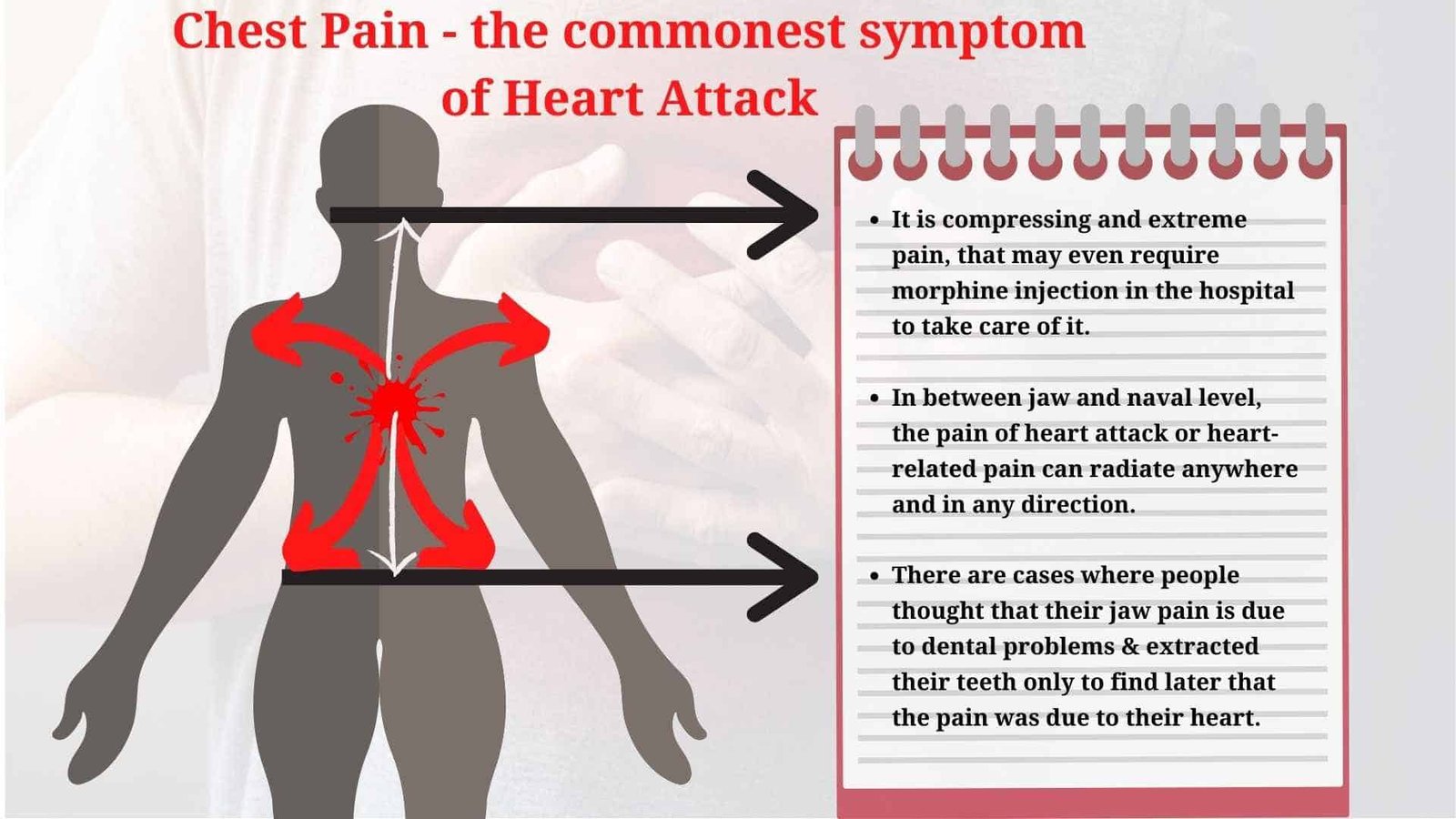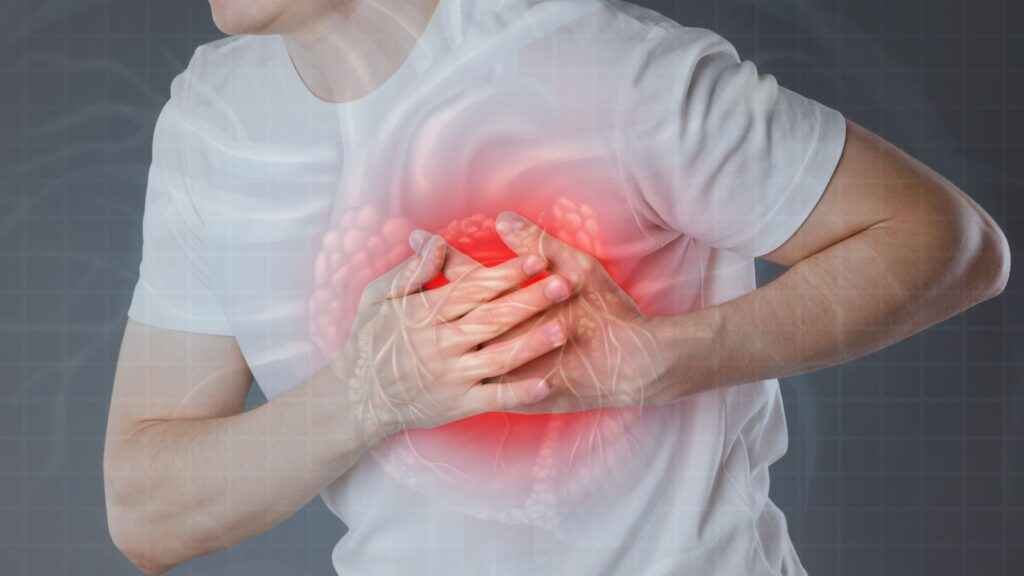- Chest pain (most common),
- Shortness of breath,
- Palpitation,
- Sweating,
- Vomiting &
- Fainting.

Chest pain is the most common symptom of an acute heart attack.
It is usually explained as an aesthesis of squeezing pressure or constriction. Pain normally diversifies to the left arm and diversifies to the upper abdomen, back, right arm, neck, and lower jaw. Pain diversifying to the shoulder and right arm largely indicates an acute myocardial infarction, so do chest pain similar to a previous heart attack.
The pain linked to myocardial infarction is normally propagated, doesn’t change with positions, and lasts more than twenty minutes. It could also be manifested in unexplained anxiety, or the pain might be completely absent. Levine’s sign-in, in which an individual focalizes the chest pain by clenching one or both fists over their sternum, has definitively been said to predict cardiac chest pain. However, a related experimental study revealed it had a poor positive predictive value. Pain in individuals who have STEMI have varied intensities; in most cases, it is severe and in some individuals is intolerable.
STEMI pain may diminish when the physician meets the patients or persist for long until sufficient reperfusion. Both STEMI and angina pectoris pain come from nerve endings in ischemic or injured but not necrotic myocardium. Therefore, in incidences of STEMI, nerve fibres in an ischemic zone of myocardium within the central area of infarction cause pain when stimulated. The pain disappears wholly and instantly after the restoration of blood flow to the infarct region. Normally chest pain resulting from ischemia, be it myocardial infarction or unstable angina diminishes with the use of nitro-glycerine.
Even after undergoing reperfusion, pain resistance may require immediate evaluation for acute reclusion of the culprit lesion. The knowledge that pain indicates ischemia instead of infarction facilitates the need for targeted anti-ischemic therapy and immediate reperfusion to relieve the ischemia, for which the pain is an indicator. This means that clinicians should not be complacent about ongoing cardiac pain in any case.
Other symptoms
Besides chest pain –
- fainting,
- vomiting or nausea, and
- sweating may also indicate a heart attack.
The symptoms may occur in the absence of chest pain.
The most common symptoms of a heart attack in women include –
- tiredness,
- weakness, and
- shortness of breath in women. Shortness of breath is more prevalent. In some cases, the only indicative symptom when damage to the heart affects the left ventricle’s functioning, resulting in breathlessness either from low oxygen in the blood or pulmonary enema.
Other rare symptoms include –
- abnormal heart rate and blood pressure,
- palpitations,
- light-headedness, and weakness.
These symptoms potentially result from the rapid flow of catecholamines produced by the sympathetic nervous system as a response to pain and low blood pressure. Heart attack causes ventricular fibrillation leading to unconsciousness due to insufficient blood flow to the brain, cardiogenic shock, and instant death. Cardiac arrest and irregular symptoms like palpitations are more prevalent in critically ill patients, individuals who have just undergone surgery, diabetic people, the elderly, and women. Physical discomfort may accompany other symptoms preceding STEMI.
Silent heart attack
A silent heart attack can occur in the absence of all symptoms. Such cases can be identified on electrocardiograms using blood enzyme tests or autopsy after a person’s death. Silent heart attacks account for 22% to 64% of all myocardial infarctions and are more prevalent in diabetic people, the elderly, and after heart transplantation. In diabetic individuals, variations in phycological factors, autonomic neuropathy, and pain detection have been identified as potential accounts for the absence of symptoms.





